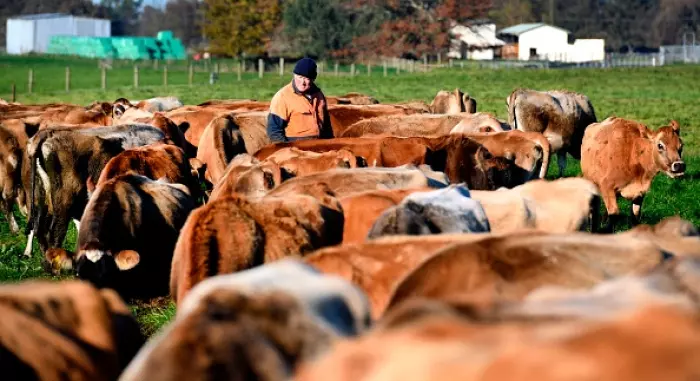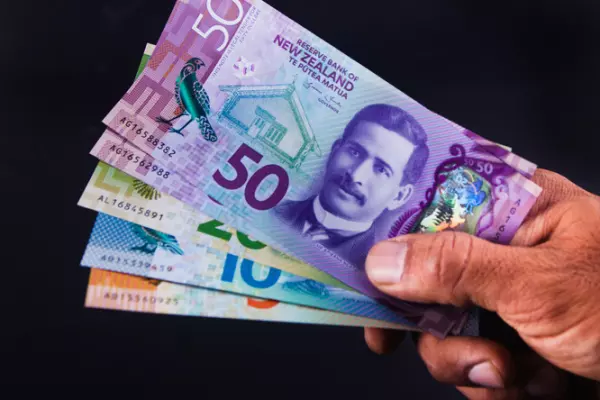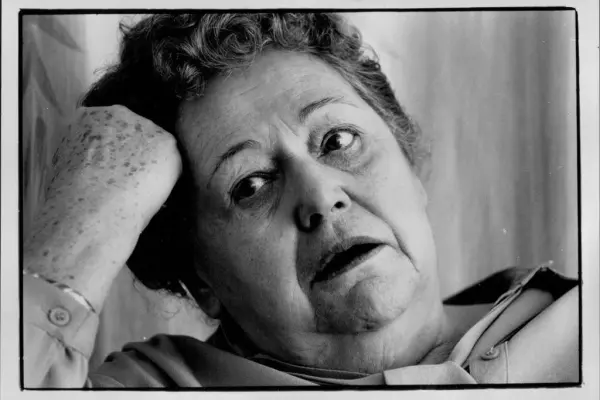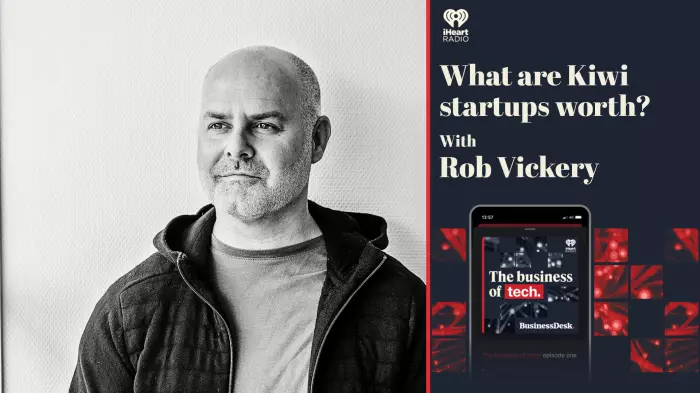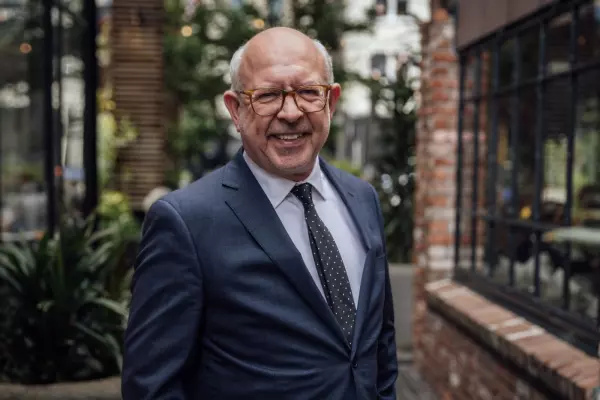This article has been republished. It was first published in October
Fonterra obviously has very limited corporate memory, especially when it comes to atoning for the sins of the past.
How else to explain that its wage bill for those earning more than $500,000 jumped 37.7% in the latest year?
That's a year in which net profit attributable to its farmer shareholders fell 15.7% to $578 million.
And it's after the Beingmate and China Farms fiascos and all the other examples of poor decision-making since Fonterra was created in 2001.
There had appeared to have been some recognition of the dairy giant's abysmal failures when the aggregate paid to those earning more than $500,000 a year was cut more than $37m between 2018 and 2020.
But in the year ended July 31 this year, Fonterra has returned to form, increasing the numbers paid more than $500,000 from 81 to 108.
That added about $23m to the annual wage bill.
Chief executive Miles Hurrell's take-home pay more than doubled from just above $2m to nearly $4.3m. This included a $2.2m "pay for performance" bonus under Fonterra's "executive incentive plan" that was paid on Oct 1 last year, as foreshadowed in last year's annual report.
Not in Spierings' league yet
This year's report shows he's in line for another near $2m bonus in the current financial year with another nearly $1.8m falling due in October 2023 and 2024.
Let's not forget his predecessor Theo Spierings was paid more than $8m in 2018, his last year at Fonterra, so Hurrell still has a way to go if he's aiming to match Spierings.
But are these the kind of salaries appropriate for a commodity processor and trader?
Fonterra does have pretensions to be more than a commodity processor but just about every effort it's made to add value, which was supposed to be its mission when it was created, has turned into a shareholder wealth-destroying disaster.
And are these the kind of salaries anybody should be able to command for presiding over one the most monumentally stupid and destructive "capital structure" proposals I've ever seen?
There's always been a major problem with Fonterra's capital structure because there's a fundamental mismatch between what's best for its farmer shareholders, at least in the short term, and what's best for both Fonterra itself and the unitholders of the Fonterra Shareholders Fund.
The unitholders are supposed to receive a dividend stream from Fonterra's value-added activities. However, the higher the milk price paid to farmers, the higher Fonterra's input costs on its value-added products, which depresses its profits.
Focus on the milk payout
The farmer shareholders do receive those same dividends, but they're far more interested in the much larger milk payout.
Illustrating this, for the year ended July, the farmers received $7.54 per kilo of milk solids plus a 20c per share dividend.
The milk payout was up from $7.14 per kilo the previous year, and the dividend up from 5c.
The fund did solve a couple of major problems for Fonterra when it was created in 2012 and both the units and Fonterra shares began trading on NZX.
Fonterra had been facing major redemption risks and an unstable capital base. Previously, when a farmer stopped producing milk, they redeemed the shares they were required to own as a Fonterra supplier.
The answer to that was to take the risk away from Fonterra and to put it on the farmers by having them trade the shares among themselves.
But if only farmers were able to buy and sell economic interests in Fonterra, liquidity would be very thin, making it harder for farmers to achieve fair market prices.
Since the farmers were adamant about not wanting outside shareholders, Fonterra had to come up with another way to provide liquidity.
A kind of safety valve
So, the Fonterra Shareholders Fund fund was created. Farmers could own both shares and units and they could convert their "dry" shares into units or convert their units back into shares if they decided to increase production. Dry shares are for a farmer who isn't supplying milk to Fonterra.
By introducing outside investors, particularly institutional investors, Fonterra would also have that much-needed liquidity.
The Fonterra chair at the time, Henry van der Heyden, explained it this way: "The Fonterra Shareholders' Fund has been created to support liquidity in the Fonterra Shareholders' Market in which farmer shareholders will trade Fonterra shares."
Just how good a job the fund had been doing at providing liquidity was dramatically demonstrated when Fonterra announced on May 6 that it was putting a "temporary" cap on the fund, suspending the ability for farmers' shares to be converted into units.
The rationale for the suspension was "to allow its farmers to have open conversations and consider all options during consultation".
The impact was immediate. Both unit and share prices, which had always traded in lock-step up until then, plummeted, but the shares fell even more.
The fund's directors noted in a statement on Sept 23 that the unit price had fallen about 20% while the shares had dropped about 32%.
Squeals of pain
Unsurprisingly, farmers started squealing loudly. At the shares' lowest point, about $2.84 billion had been shaved off their collective wealth.
The shares revived a little when Fonterra announced its annual results and promised to return at least $1b to shareholders by the 2024 financial year, but they were still down 26% on Friday, or $1.92b lower than before the cap was announced.
In other words, the capital return will repair about half the damage farmers have suffered as a result of the cap.
Chair Peter McBride wrote to farmers on June 24 acknowledging that farmers were very concerned about the fall in the share price and said: "We've taken onboard your feedback."
But Fonterra's proposal to fix the share price problem is to throw another $300m at it "to support liquidity, if needed, as farmers transition to the new structure".
So, having destroyed so much farmer wealth, the solution is to throw more of the farmers' own money at it.
But the cap has to stay "to protect farmer ownership and control".
Fonterra is also proposing to alter the number of shares producing farmers must have from one share per kilo of milk solids to a minimum of one share per three kilos and to allow sharemilkers, contract milkers and farm lessors to also buy and sell the shares.
Are they that stupid?
Surely, farmers won't be so stupid as to vote for this?
But the plight of the investors in the fund is going to be even worse. According to the annual report, the fund accounts for not quite 6.7% of Fonterra's capital base – and unitholders will have no vote on the matter.
At the unit price before the May 6 announcement, that valued the fund at $494.1m. On Friday it was worth $429.7m.
Initially, Fonterra had thought it would redeem the units – this would have to be done at a "fair" price, but there's no set rule about what would be fair. Then it thought better of it, deciding it had better uses for its capital.
Farmers will no longer be able to convert their shares into units but farmers owning units will be able to convert them into shares.
Since the shares have settled into trading at about a 14% discount to the units, that doesn't appear to be a rational choice at the moment.
In a letter to unitholders on Sept 23, fund chair John Shewan said the proposed changes mean "the fund rests on fundamentally different foundations".
He noted that farmers and ex-farmers own about 56% of the fund's units. Shewan told BusinessDesk that hasn't changed much over the past year.
Lobbying for redemption
However, slides shown at the fund's last annual meeting in November last year put farmer holdings at about 12% - ex-farmer-owned units were included in the retail total.
Shewan and the other two independent directors are lobbying for Fonterra to redeem the units.
"We're working as constructively as we can" and requesting redemption is "very much a principled position", he said.
Fonterra has a legal right not to redeem the units. "However, I think obligations go with rights as well."
If Fonterra doesn't redeem, the outlook for unitholders is bleak.
The fund can't grow under the proposed new structure and it is already at risk of falling out of the benchmark S&P/NZX 50 Index. Shewan said it currently sits at number 46, having dropped from 25 when it listed in 2012.
If that happens, analysts will probably drop coverage and the few institutions left will likely be tempted to sell.
Notably, institutional investors have already been voting with their feet. Their holdings have dropped from 55% of the fund in November 2013 to about 13% now.
That means about 70% of current unitholders are retail investors (including ex-farmers).
Neither NZX's regulatory arm NZ RegCo nor the Financial Markets Authority can see any role for themselves in this debacle.
It's unconscionable that unitholders should be left stranded as an oppressed minority while Fonterra's management continues on its merry way, likely destroying farmer wealth, even as they enrich themselves, if the past is any guide.


